If you ever have jury duty in Manhattan, or need a marriage license, or have any other court business there, 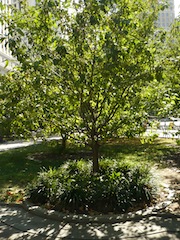
Approaching the Foley Square side from a certain angle provides a dramatic view of the new One World Trade Center in the distance. The courthouse at the left of the photo below, at 60 Centre Street, designed by Guy Lowell and built between 1913 and 1927, is home to the New York State Supreme Court – which, confusingly, is not the state's highest court, a fact I remember learning in elementary school.
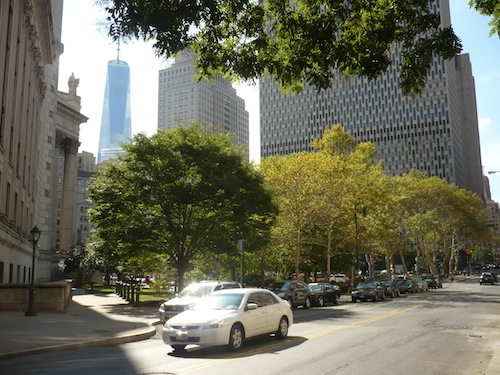
This is not an architecture blog, of course. But something about the light on the sunny afternoon I visited lent itself beautifully to appreciating the surrounding buildings.
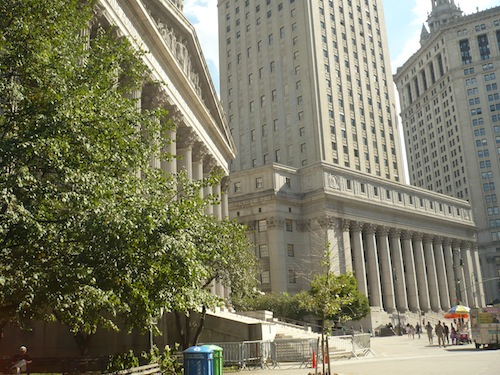
There's not too much going on in the pleasantly-laid-out park in the middle of a weekday afternoon. I imagine hordes of suits huddled on the benches over their smartphones and sandwiches during lunch hour.
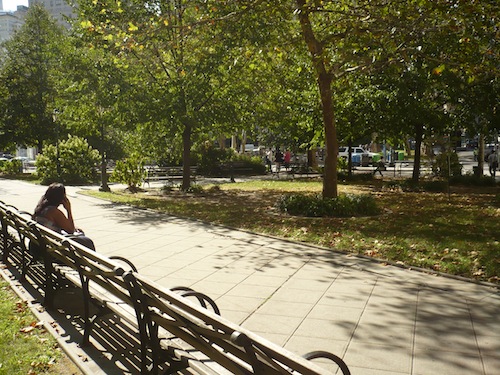
I mentioned marriage licenses. Well, because we're by the courthouse, it only makes sense there's a Wedding Garden. And because this is the Digital Age, it only makes even more sense said garden is sponsored by The Knot. And given this week's big marriage news, it seems only right to pay the garden a digital visit.
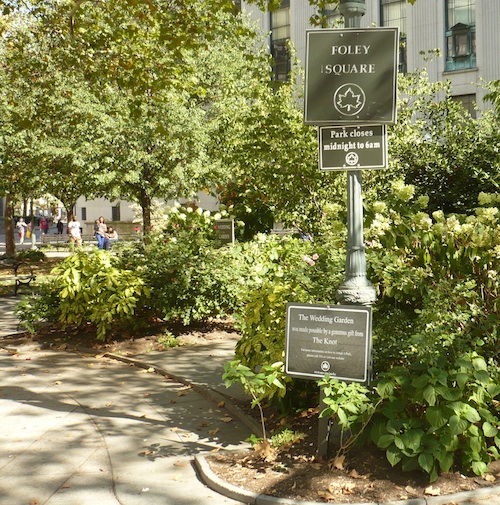
The park has two detailed medallions on the ground commemorating aspects of the city's history.

Walking through the park away from Foley Square and turning around, I got a nice view of the courthouse through the trees.
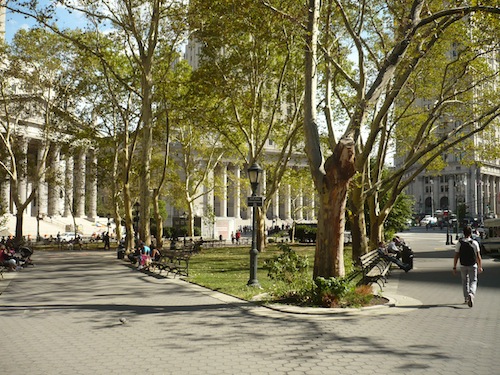
It wouldn't be an Olde Manhattan site without a reminder of the city's Dutch heritage. I stopped by the statue of Abraham De Peyster, a city official in the late 17th and early 18th centuries. Mayor from 1691-1695, he later became Treasurer of the Provinces of New York and New Jersey. Imagine how much money he'd be overseeing with a post like that today.
His bronze statue has wandered from park to park – Bowling Green, Hanover Square, and as far afield as Franklin & Marshall College in Pennsylvania, where it was too often victimized by student pranksters – since it was erected for Battery Park in the 1890s.
Given the peripatetic history of his statue, it seems appropriate that De Peyster has a direct descendant named William Ambler. An art historian, Ambler told the Tribeca Trib in an interview, after the statue had been in storage for some years:
"Quite aside from any family pride, I think it's just a good idea to get it back on view. He is most famous for being mayor but he was also the Chief Justice of the Supreme Court in what was then the colony of New York. So putting him in front of the courthouse is also an appropriate spot. And he did live on Pearl, then Queen Street, so it's nearby there as well."

Federal Hall on Wall Street, a former city hall, is on land De Peyster donated to the city in about 1699. He had a generous spirit in another way too, credited with promoting the use of public money to aid the poor. So you could say he was an early liberal. All the more reason to put his effigy at the heart of a liberal city – and in a park named after the revolutionary agitator Thomas Paine. (Though it's a mite confusing to have De Peyster here and not Paine himself.)
How in the world I visited Thomas Paine Park and Foley Square and completely missed the Triumph of the Human Spirit sculpture, which honors the New York City African Burial Ground and Commons District, I couldn't possibly tell you. My guess is that it had been removed for cleaning that day.
Not all the surrounding buildings are beautiful. But Thomas Paine Park is a really nice green oasis amid all the granite. Even if you don't have any business with the law.
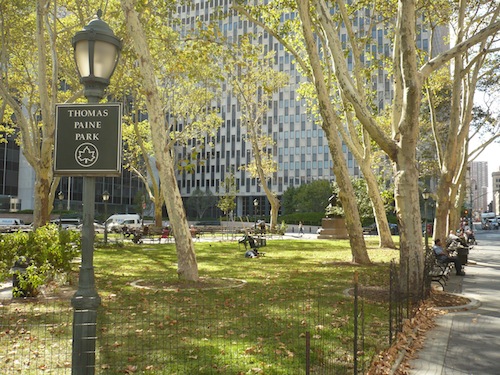
No comments:
Post a Comment